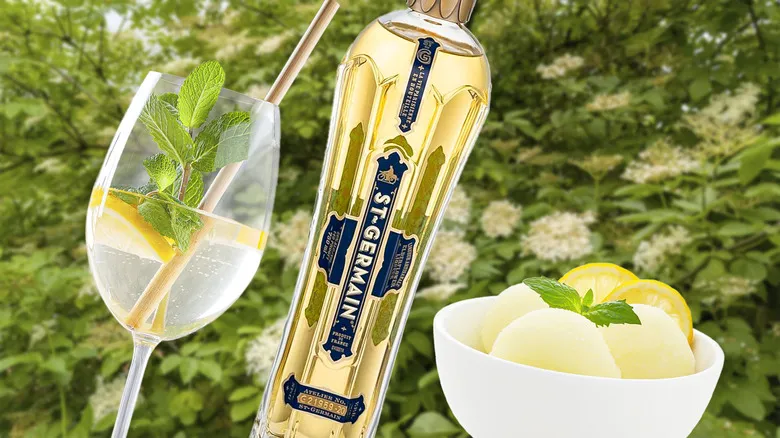What is St-Germain?
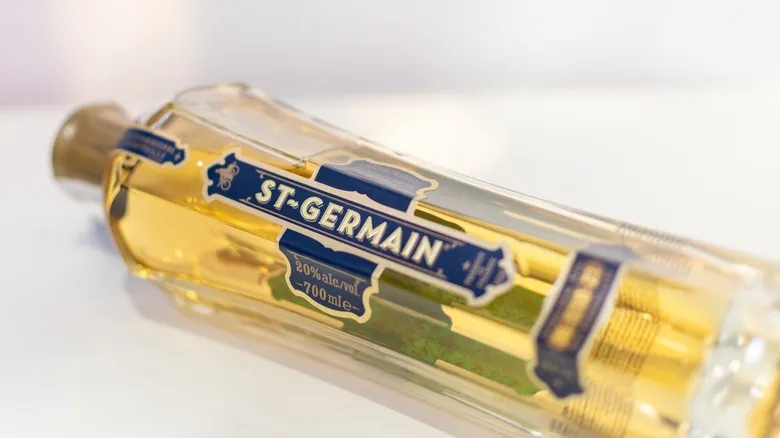
St-Germain is a French liqueur made from elderflowers, renowned for its unique and subtle flavor. Sourced from the blossoms of the European elderberry plant, it originates from the Savoie region in southeastern France. This picturesque area, nestled between the Alps, is celebrated for its rich landscapes and traditional craftsmanship, producing high-quality ingredients, including the aromatic elderflowers that thrive there. These delicate, floral blooms belong to the Sambucus family, which also encompasses elderberries.
With an alcohol content of 20% ABV (40 proof), St-Germain serves as a sophisticated addition to a variety of cocktails. Its versatility is highly regarded, making it a favorite among bartenders for its ability to elevate drinks with diverse flavor profiles. The liqueur's golden color and fragrant sweetness distinguish it as a creative force in the cocktail world.
The name "St-Germain" pays tribute to the historic St-Germain-des-Prés district in Paris, a cultural epicenter during the Belle Époque, known for its lively community of artists and writers. The bottle's stylish design reflects the Art Deco movement of that time, enhancing its appeal. Launched in 2007 by founder Robert Cooper, St-Germain quickly became celebrated for its exquisite taste and artisanal production. The use of hand-harvested elderflowers guarantees a freshness and complexity that have made it a cherished ingredient in bars and homes globally.
How is St-Germain made?
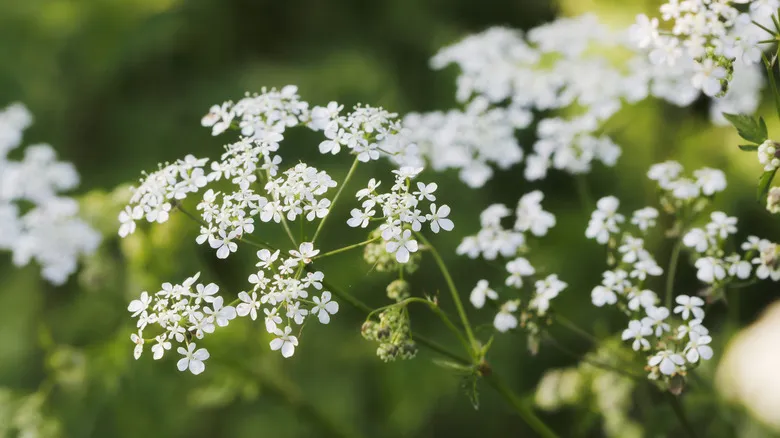
The creation of St-Germain is a careful and artisanal endeavor that starts with the meticulous hand-harvesting of elderflowers. Each year, these blossoms are gathered during their peak bloom in late spring, typically in the cooler morning hours when they are just beginning to open—this is when they are at their finest. Each bottle contains up to 1,000 delicate flowers, contributing to the elegant and aromatic profile that many have come to adore.
Once freshly picked, the flowers are transported to the distillery, where St-Germain's master liqueurist skillfully infuses them with alcohol. Timing is crucial in this process, as the flowers must be utilized swiftly to capture their delicate fragrance and flavor. No preservatives or artificial ingredients are included, allowing the natural essence of the elderflowers to shine through. St-Germain's commitment to traditional methods is a significant factor in its exceptional quality. Its lovely pale hue is derived from the natural pollen of the elderflowers, enhancing the liqueur's artisanal charm and visual allure.
From beginning to end, this labor-intensive process demands meticulous attention to detail, ensuring that every bottle of St-Germain embodies the unique characteristics of its floral source. This dedication to craftsmanship distinguishes St-Germain from other liqueurs and has solidified its status as a beloved choice in the ever-evolving global cocktail landscape.
Elderberry vs. elderflower, what's the difference?

Elderflowers and elderberries originate from the same plant, yet they present unique flavors and applications. Elderflowers are the small white blooms of the elderberry plant, celebrated for their light, floral scent. Their subtle, fragrant nature makes them perfect for infusing a gentle sweetness and depth into spirits like St-Germain.
On the other hand, elderberries are the dark purple or black fruits that form after the elderflowers have faded. Caution is necessary with these berries, as they are tart and toxic when consumed raw. However, once cooked, they shine in seasonal pies, syrups, jams, and even medicinal concoctions. Rich in nutrients, including antioxidants, vitamin C, and fiber, elderberries have been utilized in traditional medicine for centuries to enhance the immune system and alleviate colds and flu. They remain popular today, often featured in health supplements and wellness products designed to boost immunity and overall well-being.
The bold, intense flavor of elderberries stands in stark contrast to the delicate essence of elderflowers. While elderflowers contribute a sweet, floral profile, elderberries deliver a more robust, tangy taste. This difference makes each part suitable for various culinary and beverage uses, ranging from liqueurs to herbal remedies.
What does St-Germain taste like?
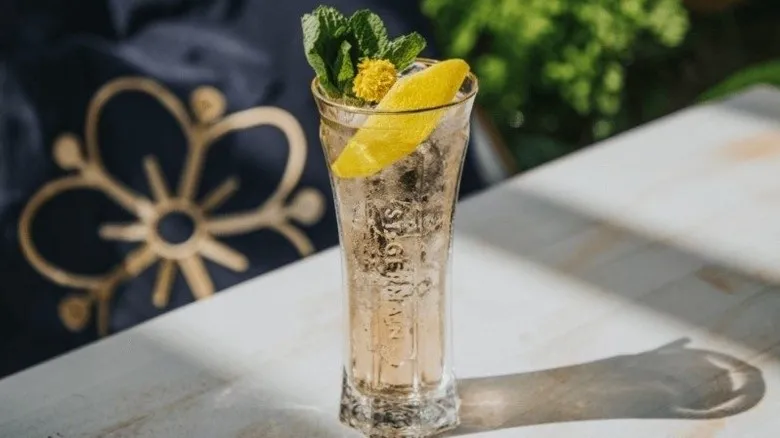
St-Germain is celebrated for its unique floral and subtly fruity flavor profile. This liqueur offers a delicate fusion of notes, featuring pear, honeysuckle, lychee, and grapefruit zest. The first sip reveals a light, floral sweetness that gradually evolves into a more intricate bouquet of flavors. The floral aspect stands out as the most prominent part of its profile. The pear adds a gentle fruitiness, while the honeysuckle lends a sweeter, more aromatic touch.
The lychee introduces a hint of the exotic, and the grapefruit zest brings a splash of citrus brightness. Together, these elements create a harmonious blend of flavors, with each ingredient enhancing the others without overwhelming them. As the liqueur lingers on the palate, its smooth texture and subtle flavors provide a refined drinking experience. Tess Anne Sawyer, a St-Germain brand ambassador, notes, "You can elevate any cocktail with St-Germain. Its incredibly versatile flavor profile pairs beautifully with any spirit." Its skillful balance of floral and fruity notes is what makes it a beloved choice for those who enjoy a sophisticated and well-rounded drink.
St-Germain cocktails
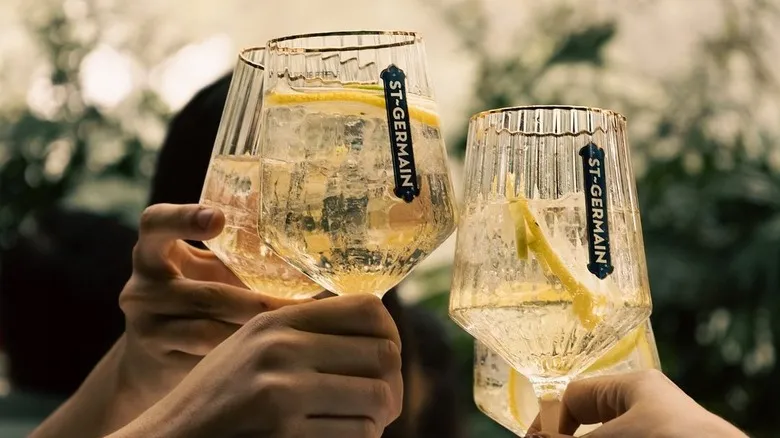
St-Germain's exceptional versatility has secured it a cherished place in the toolkit of many bartenders. Often dubbed "bartender's ketchup" due to its broad compatibility, this label, while commonly used, fails to truly reflect its premium nature, as noted by mixologist Vincenzo Marianella. Despite the somewhat negative implication of the term, St-Germain's flexibility is evident in a wide range of cocktails. "It mixes and tastes fantastic with nearly any basic spirit — tequila, vodka, gin, you name it," Marianella observes. A popular choice is the Hugo Spritz, a refreshing combination of St-Germain, prosecco, club soda, mint leaves, and a lime wedge. Ben Goodwin, the Irish mixologist known as The Rusty Bartender, emphasizes its transformative power: "It can completely alter a drink with just a small addition."
For those looking for something unique, Tess Anne Sawyer suggests the Bohemian cocktail, which combines St-Germain, gin, pink grapefruit juice, and Peychaud's bitters. She also recommends the Cooper Union, a whiskey and elderflower twist on the classic Sazerac. Sawyer even created the Goldbloom to explore St-Germain's potential beyond a mere modifier. This drink, inspired by a caipirinha, features a generous pour of St-Germain mixed with gin, vermouth, and muddled lime chunks to balance the sweetness and highlight the liqueur's tropical fruit flavors. These inventive creations showcase how St-Germain can enhance virtually any cocktail style with its sophisticated floral notes, making it an essential ingredient in any mixologist's collection.
Drinking St-Germain straight

St-Germain's floral sweetness sets it apart in cocktails, but enjoying it neat may not appeal to everyone. Vincenzo Marianella recommends that "serving it on the rocks is preferable to having it neat," as the ice can soften the liqueur's sweetness and allow its flavors to develop more gradually. Tess Anne Sawyer, a brand ambassador for St-Germain, supports this notion: "Some people appreciate liqueurs on their own, but I prefer adding sparkling water or sparkling wine to enhance the lovely flavors of St-Germain." Ben Goodwin shares a similar sentiment, stating, "Honestly, I've never considered drinking St-Germain by itself." He favors mixing it with club soda for a more balanced and refreshing experience. Overall, while St-Germain shines as a cocktail component, these suggestions can elevate the experience for those interested in savoring its flavors on their own.
St-Germain's popularity
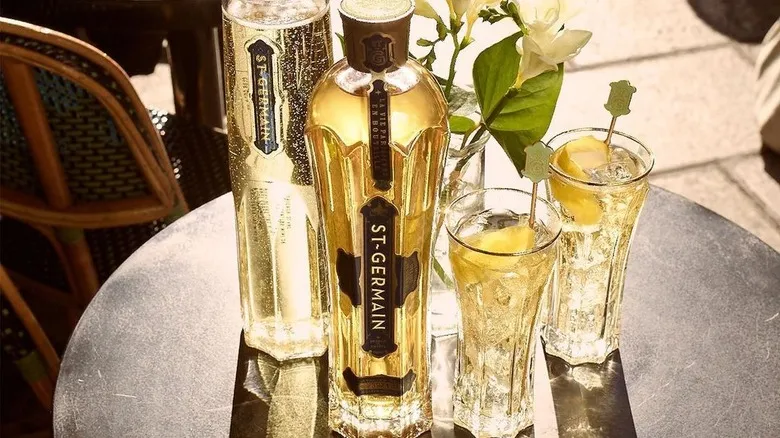
Since its debut in 2007, St-Germain has steadily gained popularity. The cocktail that truly put it on the map was the Hugo Spritz, a delightful mix of St-Germain, prosecco, club soda, and garnished with mint and lemon. Marianella notes, "It's definitely more popular now than it was before. There was a time when some bartenders thought it was too trendy to use," but that is now a thing of the past. St-Germain has firmly established itself as an essential ingredient in nearly every bar.
Ben Goodwin points out that St-Germain's reach goes beyond upscale bars to more casual settings, largely due to the rise of spritz-style drinks. Tess Anne Sawyer emphasizes that its versatility has solidified its role in the craft cocktail movement. "St-Germain was designed for bartenders, providing them with a new flavor to experiment and create with," she explains. Its ability to enhance a variety of cocktails has made it a fixture in both high-end and everyday drinking venues.
The lower ABV of St-Germain also aligns with contemporary preferences, particularly the increasing interest in lighter, low-alcohol cocktails like spritzes. This trend reflects a broader change in drinking culture, where consumers are more inclined to choose refreshing, easy-to-sip beverages that minimize the risk of overindulgence. The floral notes of St-Germain blend beautifully with sparkling water, making it perfect for casual, daytime cocktails that emphasize flavor without the potency of stronger spirits.
St-Germain vs other elderflower liqueurs
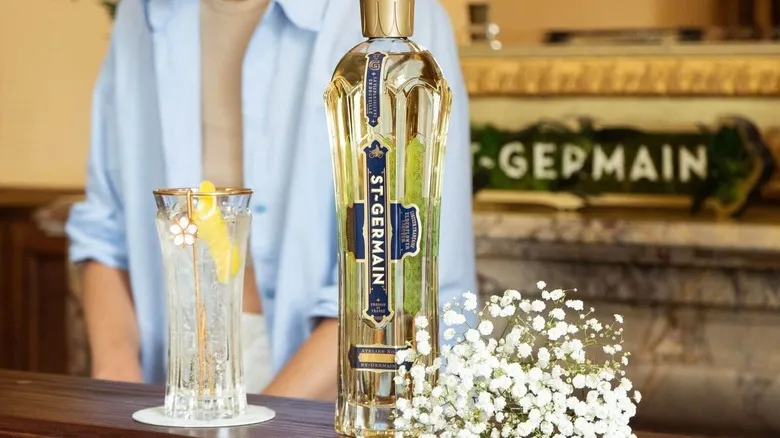
When compared to other elderflower liqueurs, St Germain distinguishes itself through its exceptional balance and quality. Vincenzo Marianella remarks, "I've sampled several elderflower liqueurs over the years, and none have matched the balance of St Germain. There was one that was drier, but it lacked floral notes. Many others were sweeter than St Germain." In contrast to some rivals that can be overly syrupy, St-Germain offers a well-rounded fusion of floral and fruity flavors.
Ben Goodwin concurs, stating, "St Germain is in a league of its own among elderflower liqueurs." He points out that many alternatives tend to have an artificial taste or are excessively sweet. Tess Anne Sawyer underscores that St Germain is crafted using fresh elderflowers, which is crucial to its superior taste. "St-Germain is the elderflower liqueur made with fresh elderflowers. The flowers are harvested and infused on the same day," she explains. "Other elderflower liqueurs often use dried elderflowers or elderflower essences, which taste vastly different from the authentic elderflower flavor that St-Germain captures. Some also incorporate additional flavors, which detracts from being a true elderflower liqueur." Ultimately, the message is clear: if you're in the market for an elderflower liqueur, St-Germain is the definitive choice.
Pairing St-Germain with food
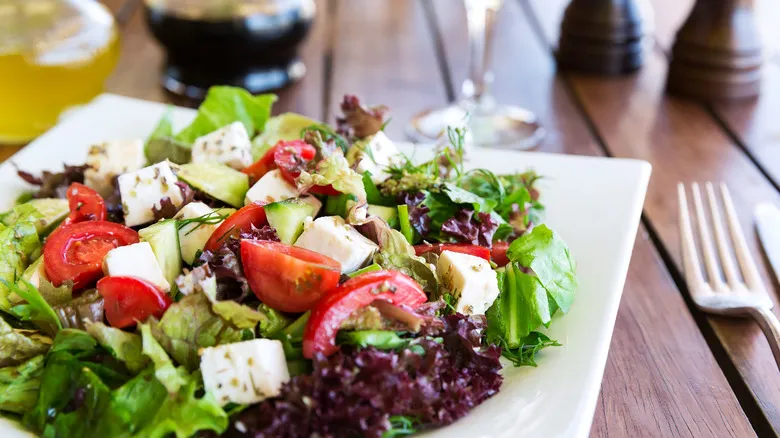
The floral notes and sweetness of St-Germain make it an excellent companion for light, fresh dishes. Marianella recommends pairing it with "something light and not too fatty, like fish." Other options to consider include salads and dishes with citrus flavors. The goal is to enhance the sweetness of St-Germain with dishes that feature bright, clean tastes.
Tess Anne Sawyer also shares some intriguing pairing suggestions, such as "a St-Germain Olivette martini with caviar," which combines dry vermouth, gin, and an olive. The combination of the liqueur's aromatic profile with the salty richness of caviar creates a luxurious balance. Another pairing idea from Sawyer is to enjoy St-Germain with "a delightful vanilla-forward dessert." This pairing will elevate the dessert's sweetness while preserving the complexity of the cocktail, resulting in a harmonious and layered experience. Overall, St-Germain's versatility allows it to excel not only in cocktails but also alongside a wide range of culinary delights.
Cooking with St-Germain

St-Germain isn't limited to cocktails; it can also serve as a creative ingredient that adds a delightful touch to your culinary endeavors. "The beautiful fruit notes of St-Germain complement other fruit flavors beautifully," says Tess Anne Sawyer. "You might incorporate it into a salad dressing for its sweet honeysuckle essence, use it in a glaze for proteins like duck to enhance the stone fruit flavors, or even drizzle it over vanilla ice cream." Additionally, St-Germain can introduce a wonderful complexity to fruit compotes or jams, especially when paired with berries or stone fruits.
Following Sawyer's suggestions, the fruitiness of St-Germain can also enhance a variety of desserts. For instance, you could blend it into a lemon glaze or frosting for a cake, infuse it into a fresh lemon sorbet, or swirl it into cheesecake batter for a refreshing, aromatic twist. The versatility and unique flavor profile of St-Germain allow it to add a surprisingly delicious and elegant touch to a wide array of culinary creations, whether savory or sweet.
Where to buy St-Germain
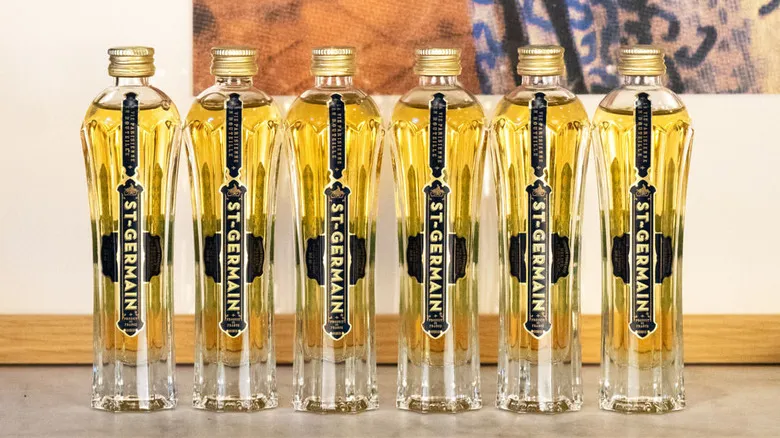
St-Germain is readily available and can be found at most well-stocked liquor stores and select grocery outlets, including popular chains like Trader Joe's, Walmart, and Total Wine. You’ll usually spot it alongside other specialty spirits in the liqueur section. If you prefer the ease of online shopping, you can purchase it directly from St-Germain's official website or through other trusted retailers like Curiada or ReserveBar, often with options for same-day delivery or scheduled shipping.
As St-Germain's popularity continues to rise, it has become increasingly accessible, whether you’re preparing for a special event or trying out new cocktail recipes at home. Some retailers even provide gift sets or limited-edition bottles, making it worthwhile to explore for unique options. With its broad availability, this premium elderflower liqueur can easily become a staple in your home bar, regardless of where you choose to shop.
How to store St-Germain
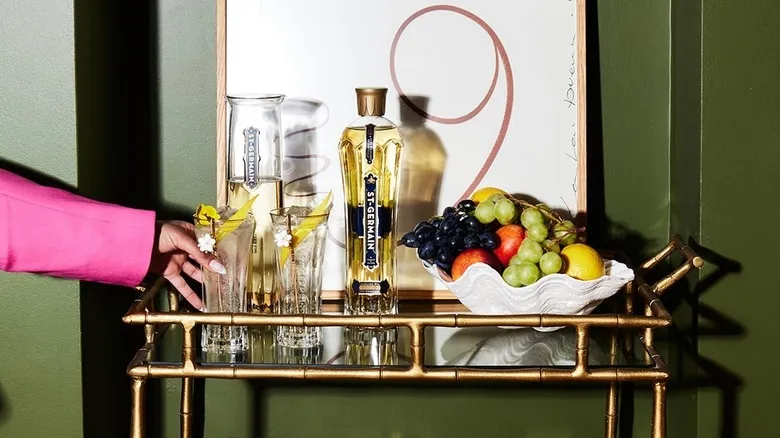
To maintain the exceptional flavor and quality of St-Germain, it is crucial to store it correctly. While you may be tempted to showcase it on your liquor cart, this is not advisable. Instead, keep the bottle in a cool, dark location, away from direct sunlight and heat sources. This practice helps prevent the liqueur from deteriorating, as exposure to light and warmth can alter its delicate floral notes and sweetness over time. Unlike higher-proof spirits, which are more stable, St-Germain's lower alcohol content and delicate nature make it more vulnerable to changes in temperature and light.
Ideally, store it in a cabinet or pantry at a consistent room temperature. Once opened, St-Germain suggests consuming the bottle within six months to fully enjoy its optimal flavor. After this period, while it won't spoil, you may notice some changes in color and taste. This is similar to other lower-alcohol liqueurs, which also benefit from being kept in controlled conditions to preserve their quality. Proper storage not only prolongs the shelf life but also ensures that each pour captures the liqueur's intended floral flavor profile.
Recommended
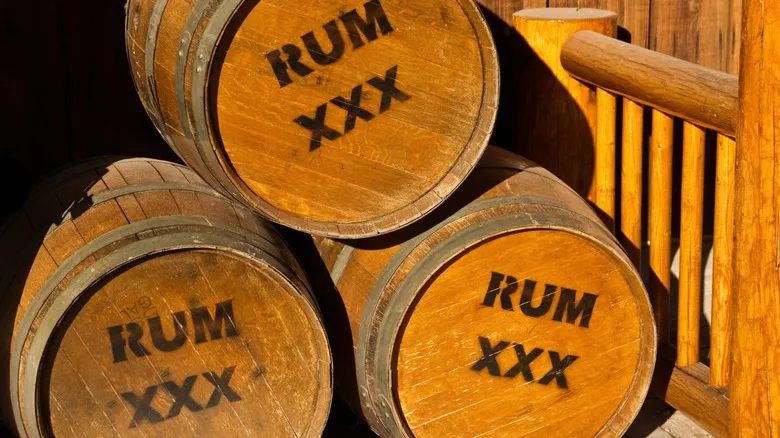
Why People Once Tested Liquor With Gunpowder
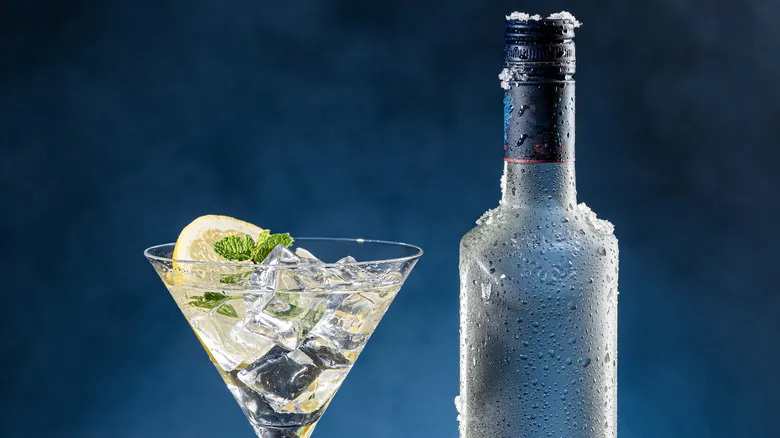
Most Vodka Isn't Actually Made From Potatoes

Nutcracker: The Banned NYC Cocktail You Can Find On Every Beach
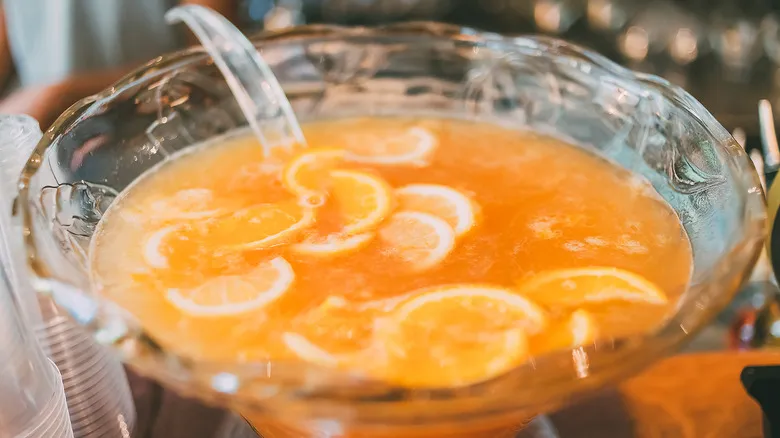
Party Like It's 1795 With This Boozy Philadelphia Punch
Next up

